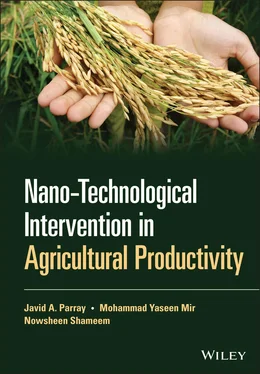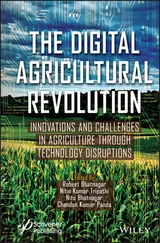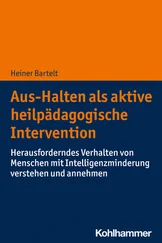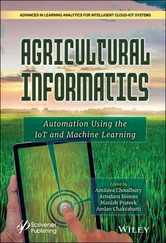27 27 Gujrati, M., Malamas, A., Shin, T. et al. (2014). Multifunctional cationic lipid‐based nanoparticles facilitate endosomal escape and reduction‐triggered cytosolic siRNA release. Mol. Pharmaceutics 11: 2734–2744. https://doi.org/10.1021/mp400787s.
28 28 Wang, Y. and Xia, Y. (2004). Bottom‐up and top‐down approaches to the synthesis of monodispersed spherical colloids of low melting‐point metals. Nano Lett. 4: 2047–2050. https://doi.org/10.1021/nl048689j.
29 29 Iravani, S. (2011). Green synthesis of metal nanoparticles using plants. Green Chem. 13: 2638. https://doi.org/10.1039/c1gc15386b.
30 30 Bello, S.A., Agunsoye, J.O., and Hassan, S.B. (2015). Synthesis of coconut shell nanoparticles via a top‐down approach: assessment of milling duration on the particle sizes and morphologies of coconut shell nanoparticles. Mater. Lett. https://doi.org/10.1016/j.matlet.2015.07.063.
31 31 Priyadarshana, G., Kottegoda, N., Senaratne, A. et al. (2015). Synthesis of magnetite nanoparticles by top‐down approach from a high purity ore. J. Nanomater.: 1–8. https://doi.org/10.1155/2015/317312.
32 32 Garrigue, P., Delville, M.‐H., Labruge're, C. et al. (2004). Top‐down approach for the preparation of colloidal carbon nanoparticles. Chem. Mater. 16: 2984–2986. https://doi.org/10.1021/cm049685i.
33 33 Zhang, X., Lai, Z., Liu, Z. et al. (2015). A facile and universal top‐down method for preparation of monodisperse transition‐metal dichalcogenide nanodots. Angew. Chem. Int. Ed. 54: 5425–5428. https://doi.org/10.1002/anie.201501071.
34 34 Zhou, Y., Dong, C.K., Han, L. et al. (2016). Top‐down preparation of active cobalt oxide catalyst. ACS Catal. 6: 6699–6703. https://doi.org/10.1021/acscatal.6b02416.
35 35 Mogilevsky, G., Hartman, O., Emmons, E.D. et al. (2014). Bottom‐up synthesis of anatase nanoparticles with graphene domains. ACS Appl. Mater. Interfaces 6: 10638–10648. https://doi.org/10.1021/am502322y.
36 36 Liu, D., Li, C., Zhou, F. et al. (2015). Rapid synthesis of monodisperse Au nanospheres through a laser irradiation‐induced shape conversion, self‐assembly and their electromagnetic coupling SERS enhancement. Sci. Rep. 5: 7686. https://doi.org/10.1038/srep07686.
37 37 Liu, J., Liu, Y., Liu, N. et al. (2015). Metal‐free efficient photocatalyst for stable visible water splitting via a two‐electron pathway. Science 80 (347): 970–974. https://doi.org/10.1126/science.aaa3145.
38 38 Needham, D., Arslanagic, A., Glud, K. et al. (2016). Bottom‐up design of nanoparticles for anti‐cancer diapeutics: “put the drug in the cancer's food”. J. Drug Targeting: 1–21. https://doi.org/10.1080/1061186X.2016.1238092.
39 39 Wang, Y. and Xia, Y. (2004). Bottom‐up and top‐down approaches to synthesizing monodispersed spherical colloids of low melting‐point metals. Nano Lett. 4: 2047–2050. https://doi.org/10.1021/nl048689j.
40 40 Parveen, K., Banse, V., and Ledwani, L. (2016). Green synthesis of nanoparticles: their advantages and disadvantages. Acta Naturae: 20048. https://doi.org/10.1063/1.4945168.
41 41 Ahmed, S., Annu, S., and Yudha, S.S. (2016). Biosynthesis of gold nanoparticles: a green approach. J. Photochem. Photobiol., B 161: 141–153. https://doi.org/10.1016/j.jphotobiol.2016.04.034.
42 42 Biswas, A., Bayer, I.S., Biris, A.S. et al. (2012). Advances in top‐down and bottom‐up surface nanofabrication: techniques, applications and prospects. Adv. Colloid Interface Sci. 170: 2–27. https://doi.org/10.1016/j.cis.2011.11.001.
43 43 Mirzadeh, E. and Akhbari, K. (2016). Synthesis of nanomaterials with desirable morphologies from metal–organic frameworks for various applications. CrystEngComm 18: 7410–7424. https://doi.org/10.1039/C6CE01076H.
44 44 Khlebtsov, N. and Dykman, L. (2011). Biodistribution and toxicity of engineered gold nanoparticles: a review of in vitro and in vivo studies. Chem. Soc. Rev. 40: 1647–1671. https://doi.org/10.1039/C0CS00018C.
45 45 Wang, J., Yang, N., Tang, H. et al. (2013). Accurate control of multishelled Co3O4 hollow microspheres as high‐performance anode materials in lithium‐ion batteries. Angew. Chem. Int. Ed. 52: 6417–6420. https://doi.org/10.1002/anie.201301622.
46 46 Emery, A.A., Saal, J.E., Kirklin, S. et al. (2016). High‐throughput computational screening of perovskites for thermochemical water splitting applications. Chem. Mater. 28 https://doi.org/10.1021/acs.chemmater.6b01182.
47 47 Ingham, B. (2015). X‐ray scattering characterization of nanoparticles. Crystallogr. Rev. 21: 229–303. https://doi.org/10.1080/0889311X.2015.1024114.
48 48 Avasare, V., Zhang, Z., Avasare, D. et al. (2015). Room‐temperature synthesis of TiO2 nanospheres and their solar‐driven photoelectrochemical hydrogen production. Int. J. Energy Res. 39: 1714–1719. https://doi.org/10.1002/er.3372.
49 49 Khan, I., Ali, S., Mansha, M., and Qurashi, A. (2017). Sonochemical assisted hydrothermal synthesis of pseudo‐flower shaped Bismuth vanadate (BiVO4) and their solar‐driven water splitting application. Ultrason. Sonochem. 36: 386–392. https://doi.org/10.1016/j.ultsonch.2016.12.014.
50 50 Mansha, M., Qurashi, A., Ullah, N. et al. (2016). Synthesis of In2O3/graphene heterostructure and their hydrogen gas sensing properties. Ceram. Int. 42: 11490–11495. https://doi.org/10.1016/j.ceramint.2016.04.035.
51 51 Lykhach, Y., Kozlov, S.M., Skála, T. et al. (2015). Counting electrons on supported nanoparticles. Nat. Mater. https://doi.org/10.1038/nmat4500.
52 52 Oprea, B., Martínez, L., Román, E. et al. (2015). Dispersion and functionalization of nanoparticles synthesized by gas aggregation source: opening new routes toward the fabrication of nanoparticles for biomedicine. Langmuir 31: 13813–13820. https://doi.org/10.1021/acs.langmuir.5b03399.
53 53 Wang, Y.C., Engelhard, M.H., Baer, D.R., and Castner, D.G. (2016). Quantifying the impact of nanoparticle coatings and nonuniformities on XPS analysis: gold/silver core‐shell nanoparticles. Anal. Chem. 88: 3917–3925. https://doi.org/10.1021/acs.analchem.6b00100.
54 54 Dablemont, C., Lang, P., Mangeney, C. et al. (2008). FTIR and XPS study of Pt nanoparticle functionalization and interaction with alumina. Langmuir 24: 5832–5841. https://doi.org/10.1021/la7028643.
55 55 Pokhrel, M., Wahid, K., and Mao, Y. (2016). Systematic studies on RE2‐Hf2O7:5%Eu3+ (RE = Y, La, Pr, Gd, Er, and Lu) nanoparticles: effects of the A‐site RE3+ cation and calcination on structure and photoluminescence. J. Phys. Chem. C 120: 14828–14839. https://doi.org/10.1021/acs.jpcc.6b04798.
56 56 Muehlethaler, C., Leona, M., and Lombardi, J.R. (2016). Review of surface‐enhanced Raman scattering applications in forensic science. Anal. Chem. 88: 152–169. https://doi.org/10.1021/acs.analchem.5b04131.
57 57 Ma, S., Livingstone, R., Zhao, B., and Lombardi, J.R. (2011). Enhanced Raman spectroscopy of nanostructured semiconductor phonon modes. J. Phys. Chem. Lett. 2: 671–674. https://doi.org/10.1021/jz2001562.
58 58 Sikora, A., Shard, A.G., and Minelli, C. (2016). Size and ζ‐potential measurement of silica nanoparticles in serum using tunable resistive pulse sensing. Langmuir 32: 2216–2224. https://doi.org/10.1021/acs.Langmuir.5b04160.
59 59 Filipe, V., Hawe, A., and Jiskoot, W. (2010). Critical evaluation of nanoparticle tracking analysis (NTA) by insight to measure nanoparticles and protein aggregates. Pharm. Res. 27: 796–810. https://doi.org/10.1007/s11095-010-0073-2.
60 60 Gross, J., Sayle, S., Karow, A.R. et al. (2016). Nanoparticle tracking analysis of particle size and concentration detection in suspensions of polymer and protein samples: influence of experimental and data evaluation parameters. Eur. J. Pharm. Biopharm. 104: 30–41. https://doi.org/10.1016/j.ejpb.2016.04.013.
Читать дальше











![Chade-Meng Tan - Search Inside Yourself - Increase Productivity, Creativity and Happiness [ePub edition]](/books/703803/chade-thumb.webp)
